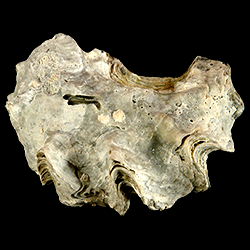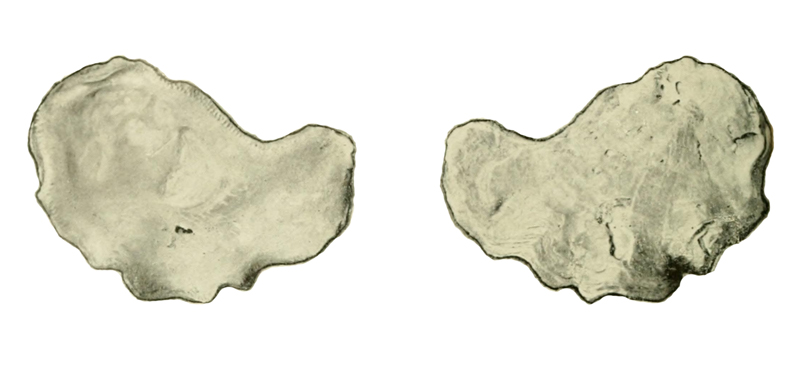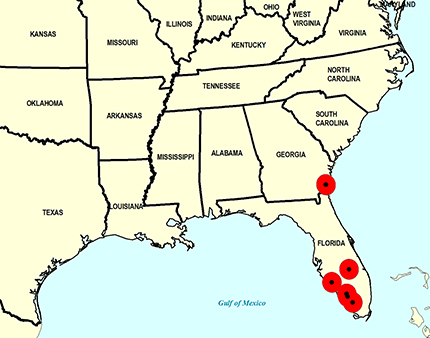
Ostrea locklini

Geological Range
Late Pliocene; Extinct.
Paleogeographic Distribution
Southern Florida to Georgia.
Remarks
Original Description (from Gardner, 1945, p. 39-40):
"Shell of medium size, broadly falcate, attached by only a small area on the left umbone. Valves subequal, the right valve a little smaller, more compressed and less strongly rippled than the left. Anterior and ventral margins forming a broad arc, the posterior lateral margin rather strongly concave. Marginal folds deep, confined in some individuals to the outer arc, in other individuals originating in the umbonal area; average number 5 or 6. Concentric sculpture feeble, incremental only. Possibly a crude radial cording may be developed, but only faint traces are discernable on the weathered surfaces. Ligament area small, low, flattened, depressed medially in the left valve. Inner marginal denticulations very fine, extending along the inner posterior lateral margin and at least a third of the way down the inner surface of the anterior lateral and ventral margin. Muscle scar relatively large, pyriform, posterior, distinct.
Dimensions: Height, right valve, 56 millimeters; left valve, 59 millimeters; width, right valve, 38 millimeters, left valve, 41 millimeters; thickness of double valves, excluding marginal rippling, 16 millimeters; including marginal rippling, 21 millimeters.
Locality: Spoil bank from dredgings of upper Miocene in Tampa Bay off Snell Island, St. Petersburg, Pinellas County, Florida.
Holotype, paired values: U.S. National Museum No. 559870. Topotypes, 5 sets of paired valves and 4 single valves: U.S. National Museum No. 559871.
Paired valves of the related Ostrea sculpturata Conrad are common in the same dredgings. The right and left valves of O. sculpturata are less similar to each other in size, outline, and sculpture pattern than those of O. locklini. The fluted crescent outline is exceptional in O. sculpturata, but is the normal form of O. locklini. The plications in O. sculpturata commonly number at least twice those of Ostrea locklini and are consequently narrower and sharper and usually originate nearer to the tips of the umbones.
Ostrea locklini has not been recognized in the outcrop.
The species is named in honor of the donor, Mr. Charles R. Locklin."
To access this description in its original formatting through the Biodiversity Heritage Library, click here.
Synonymous with Undulostrea locklini.
Stratigraphic Occurrences
- Late Pliocene
- Duplin / Raysor formations (GA)
- Raysor Formation (GA)
- Tamiami Formation (S. FL)
- Tamiami Formation (Ochopee Limestone) (S. FL)
- Tamiami Formation (Pinecrest Beds) (S. FL)



